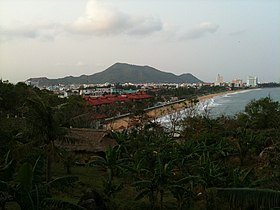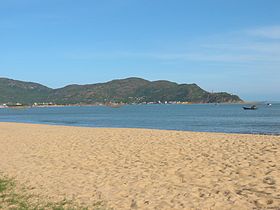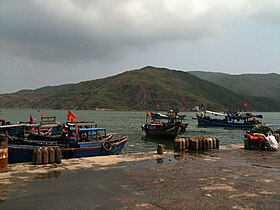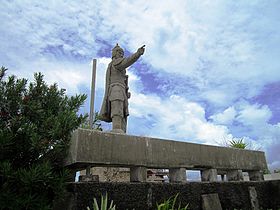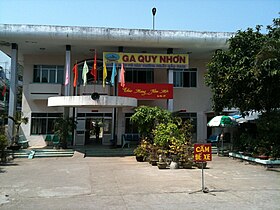Quy Nhon
Quy Nhon (Vietnamese: Quy Nhơn Vietnamese: [kwi ɲəːŋ] ) is a coastal city in Bình Định province in central Vietnam. It is composed of 16 wards and five communes with a total of 284 km2 (110 sq mi). Quy Nhon is the capital of Bình Định province. As of 2019 its population was 457,400.[1] Historically, the commercial activities of the city focused on agriculture and fishing. In recent years, however, there has been a significant shift towards service industries and tourism. There is also a substantial manufacturing sector.
History[edit]
The origins of human settlement stretch back to the 11th-century Champa culture, the Tây Sơn dynasty as well as the 18th-century seaport of Thị Nại. The city was subject to a Mongol invasion in the Battle of Thị Nại Bay (1283) during the Mongol invasions of Vietnam. During the Ming treasure voyages of the 15th century, the Chinese fleet led by Admiral Zheng He would always make port at Quy Nhon in Champa as their first destination after leaving China.[2] During the 1620s the town was host to Portuguese Jesuits who called the place Pulo Cambi.
The town of Quy Nhon was officially founded in the late 18th century. The city is renowned as the birthplace of 18th century Vietnamese emperor Nguyễn Huệ.[3] It was also the site of the Bombardment of Qui Nhơn in 1861, and more recently, it had a large American and Korean military presence, especially the Capital Mechanized Infantry Division of the Republic of Korea Army during the Vietnam War.[4]
Today the city is recognized as a first class city with a geo-economic priority and an urbanized infrastructure. The government describes it as one of the three commercial and tourism centres of the central southern coastal region (with Da Nang and Nha Trang).
Quy Nhon is home to multiple domestically famous Vietnamese dishes:
